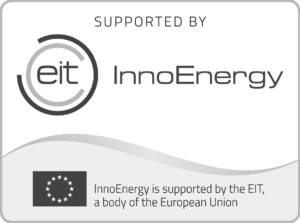16.12.2020
Connected Health Cluster helps develop tech solutions to support people’s daily lives
In the past, the social sector and the tech sector have primarily operated independently and cooperation has been random. Now, however, more and more consideration is given to ways to connect the users and creators of solutions to enable people to manage their daily lives and maintain wellbeing at home without outside assistance for as long as possible.
According to René Randver, adviser to the Social Welfare Department of the Ministry of Social Affairs, innovative tech solutions have stepped up to support people’s wellbeing in a number of day-to-day areas at home, in communities, with service providers and as supportive elements of the work processes of the healthcare and social welfare systems in general.
“Using innovative solutions, it is possible to provide all manner of support to people who need care and people who bear the burden of care as well as alleviate care-related problems,” says Randver.
“When people return home after hospitalisation, they are largely left to their own means because home services lack sufficient development and the level of availability of social services is not the same in all places. One option would be to combine home services with tech solutions to enable living to the fullest without outside help in home conditions for as long as possible.”
How can the state be of assistance?
In the summer of 2020, during a cabinet meeting, the Government of the Republic confirmed a green paper prepared by the Ministry of Social Affairs, which highlights development directions and proposals on solutions to increase the use of tech in improving people’s day-to-day management and wellbeing.
The green paper discusses innovative solutions, primarily in people’s homes. Among other things, the paper admits that service development should focus more on preserving and increasing people’s ability to manage without outside help.
Cooperation leads to tech solutions that support day-to-day life in all areas
According to Piret Hirv, Head of the Connected Health Cluster led by science and business campus Tehnopol, the healthcare sector develops many good solutions for improving people’s health or making their lives easier.
“As healthcare and welfare services are closely linked, one of the strategic directions of the Cluster also lies in welfare services,” says Hirv on the Cluster’s current examples. “Our members have already come up with many good solutions that can be used in welfare, such as a comprehensive solution for supporting the documentation of wounds to help healthcare professionals with the diagnosis and treatment of acute and chronic wounds. This support solution could potentially be expanded to care workers who provide welfare services for people requiring low levels of personal medicinal assistance.
Another example is the interactive practicing environment for children and adults/aphasia patients designed with speech therapists to alleviate speech impediments (incl. stutter). Exercises can be performed at home and there is no need to see the specialist in person every time.
There is also a platform designed to bring together service providers and people in need of assistance in the social sector to empower those close to people in need of assistance (i.e. informal carers) to stay in the labour market and participate in the provision and development of services needed in the community.”
Supporting integrated and coordinated service provision is important, for example, when it comes to complex illnesses such as strokes and dementia as well as for the long-term support of the elderly and people with chronic disease.
“It is important to involve users in the development of innovative solutions,” stresses Hirv. “The developers themselves might not have sufficient knowledge of the problems facing the social sector and the practical needs of people. The Cluster has a big role to play in bringing these two sides together.”












